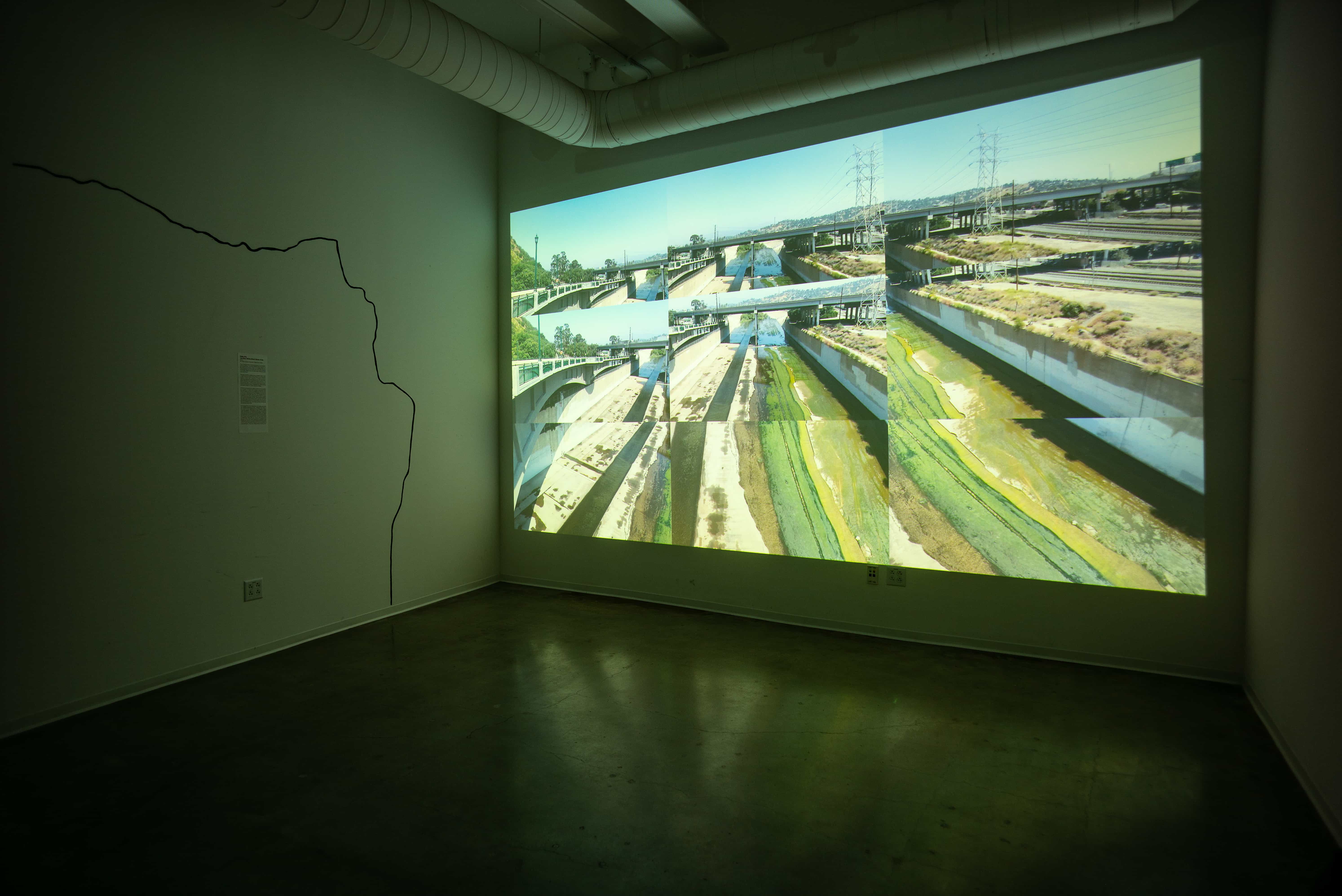The River Will Be What It Needs To Be
Single Channel Video. 6 minutes. Captured in 2022.
2022
From Canoga Park to the dual ports of Los Angeles and Long Beach, The River Will Be What It Wants To Be, observes sections of the Los Angeles River as it persistently traces its fifty-one mile path towards the Pacific. What does the river want, what is it, and what will it be?
The day my father passed away, on March 31st, I took a walk from my home in Echo Park to the Frogtown section of the river. I stood on a bridge as warm, salty tears slid down my face and into the cool water below. My tears, now a part of the river, returning—as everything must—to the ocean. Knowing my father would be buried at sea, I imagined his ashes joining my tears, united in a vast expanse of blue. All life is connected by water; we are all connected by a series of visible and invisible waterways that flow through and from our neighborhoods en route to the sea. Growing up in Los Angeles, my life has long been entwined with the Los Angeles River watershed but only in recent months have I sought out a relationship with the river. Channelized; polluted; rife with trash and invasive plant species; and with diminished populations of native plants and animals; the Los Angeles river has been greatly diminished, yet remains full of life.
In Canoga Park, two tributaries converge and mark the official beginning of the L-shaped river that is the heart of our watershed in Los Angeles. Unlike most geographic designations that we are familiar with, watersheds are undefined by politics. They are delineated by the natural processes that carry water through them and link all guests living on these lands. As a guest observing the river from its banks (and accidentally falling into it), I witness the power and beauty of the river while mourning its pollution and longing for the river’s freedom. Relieved of the burden of our runoff and trash; freed from the constrains of channelization. The river will be what it needs to be.
